American girls pose with their American Girl dolls
Ilona Szwarc made a series of portraits of American girls with their American Girl dolls.




This site is made possible by member support. 💞
Big thanks to Arcustech for hosting the site and offering amazing tech support.
When you buy through links on kottke.org, I may earn an affiliate commission. Thanks for supporting the site!
kottke.org. home of fine hypertext products since 1998.
Ilona Szwarc made a series of portraits of American girls with their American Girl dolls.

The group in charge of the High Line in NYC is considering a permanent installation for the park by Jeff Koons. It is called Train.

Yes. Yes, yes, yes. Love it, make it happen. The NY Times has more.
“We’ve had a crush on the ‘Train’ for a while now,” Mr. Hammond said in a phone interview on Monday. “To me, it looks very industrial and sculptural. The craftsmanship that went into these industrial engines is quite beautiful.”
The sculpture, to be constructed of steel and carbon fiber, would weigh several tons. It would also occasionally spin its wheels, blow a horn and emit steam.
In a statement, Mr. Koons said, “The power and the dynamic of the ‘Train’ represents the ephemeral energy that runs through the city every day.”
(via @sippey)
Nipples at the Met is a photographic collection of all the nipples on display in the permanent collection at the Met Museum in NYC.
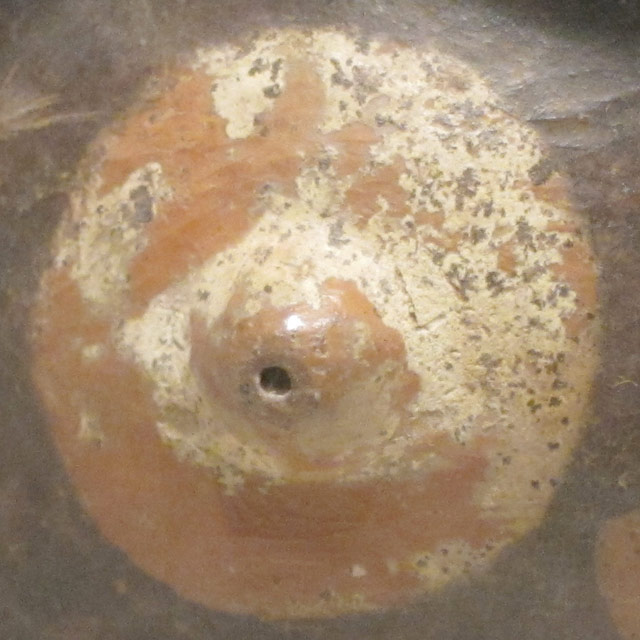
(via @claytoncubitt)
For her project My Pie Town, Debbie Grossman modified Depression-era photos to depict all-female families.

Joan Myers’ biography of Doris Caudill (Doris is in many of the pictures), Pie Town Woman, describes her husband, Faro, as less than helpful on the homestead. I had downloaded a portrait of Doris and Faro from the Library of Congress website, and because it was so high-resolution, it occurred to me that I had enough pixels to work with that I could alter the image. I removed Faro, and I loved the opportunity to look at Doris on her own and imagine a different life for her. I thought it would be fun to remake the whole town in a way that reflected my own family, and I imagined a Pie Town filled with women.
The main reason for doing so was to give us the unusual experience of getting to see a contemporary idea of family (female married couples as parents, for example) as if it were historical. But I am also very interested in using Photoshop to create imaginary or impossible images-this is something I have done in other work as well.
(via @riondotnu)
Perhaps inspired by 500 Years of Female Portraits in Art or this hat throbber, art.com made a video in support of their new iPad app.
Eating a flower gives you the power to spit fireballs. Bullets have faces. Stars make you invincible. In addtion to being video game, maybe Super Mario Bros is a surrealist masterpiece.
Il Ratto di Proserpina (The Rape of Proserpina) is an amazing sculpture by Bernini. It depicts Pluto abducting Proserpina to take her to the underworld. The overall composition is great but the devil (ahem) is in the details. For example, check out how Pluto’s hands grip into the marble flesh:
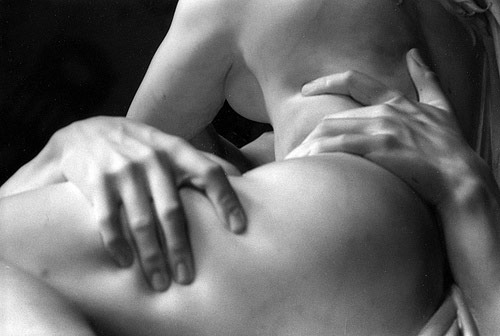
Wonderful. Bernini completed this piece in 1622 when he was just 23 years old. (via stable transit)
Charcoal remains found near six cave paintings in Spain have been carbon dated to between 43,500 and 42,300 years old. The paint has yet to be tested, but the drawings could be from the same period.
The next step is to date the paint pigments. If they are confirmed as being of similar age, this raises the real possibility that the paintings were the handiwork of Neanderthals — an “academic bombshell”, says Sanchidrian, because all other cave paintings are thought to have been produced by modern humans.
Neanderthals are in the frame for the paintings since they are thought to have remained in the south and west of the Iberian peninsula until approximately 37,000 years ago — 5000 years after they had been replaced or assimilated by modern humans elsewhere in their European heartland.
You may remember Martin Klimas from his photos of shattering figurines (which I love).
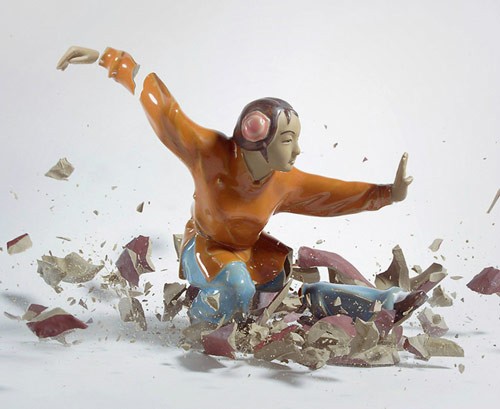
His latest project involves arranging paint just above massive speakers, turning the sound up, and photographing the results. This is Steve Reich’s “Music for 18 Musicians”:
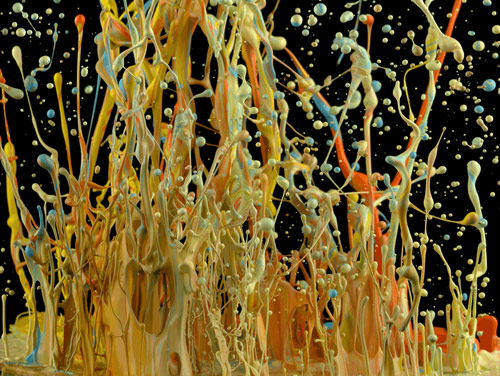
I wonder what dubstep looks like? (via @pomeranian99)
The Awl has an interview with a street artist named Hanksy, who takes images from Banksy and incorporates Tom Hanks into the mix. WIIIILLLSONNNN!!

I’ve come across comments or stories written about Hanksy saying I’m directly ripping off Banksy’s style. Like, “Where does this guy get off, stealing Banksy’s work?” They are completely missing the point. It’s a satire. My goal was never to make a profit. It came about and there was a genuine excitement around the people at the gallery and the community in general.
I’m pretty sure the interviewer, EA Hanks, is Tom’s daughter and she got her dad on the record about Hanksy:
Regarding your work, Tom Hanks sends the message, “I don’t know who Hanksy is, but I enjoy his (her?) comments via the semi-chaos of artistic expression.”
But the T.HANKS trash can remains my favorite Tom Hanks street art:
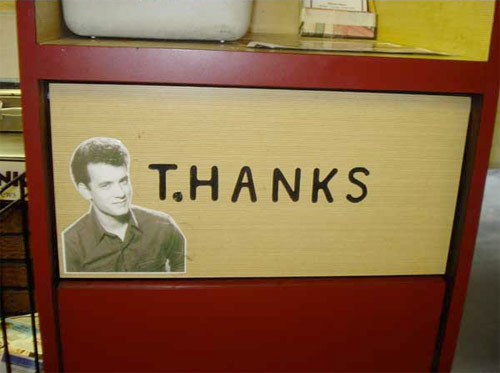
In 1930, Iowa artist Grant Wood painted American Gothic. The models he used for the painting were his sister Nan Wood Graham and his dentist, Byron McKeeby. Here they are next to the painting:

Wood made the painting after spotting a small house in Eldon, Iowa:

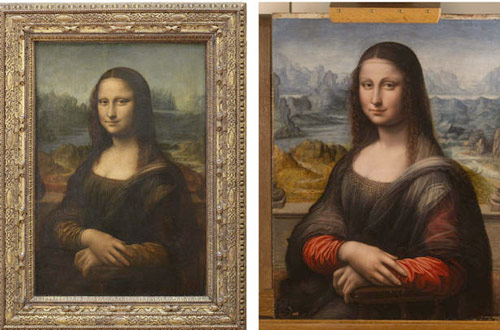
Restorers at the Prado Museum in Madrid, working on what they thought was a 16th or 17th century replica of the Mona Lisa, have discovered that the painting was actually done by a student of Leonardo’s at the same time as the original.
Museum experts are in the process of stripping away a cover of black over-paint which, when fully removed, will reveal the youthfulness of the subject they say. The final area of over-paint will come off in the next few days.
The original “Mona Lisa” hangs in the Louvre but the sitter looks older than her years as the varnish is cracked. The painting is so fragile that restoration or cleaning is deemed too risky. The Prado version, however, will show the sitter as she was: a young woman in her early 20s.
Korean artist Kang Duck-Bong makes PVC pipe sculptures that look like they’re moving.
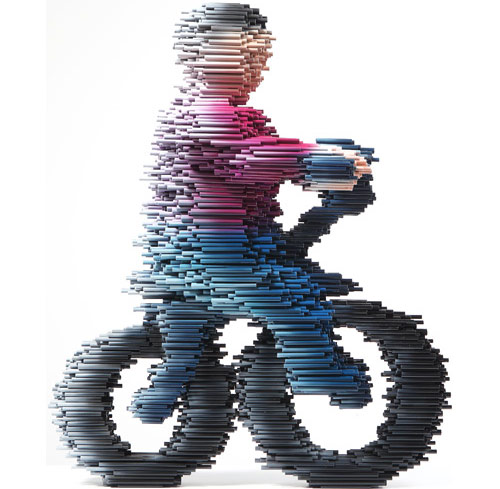
(via colossal)
In a piece for Vanity Fair, Kurt Andersen argues that for the first time in recent history, American pop culture (fashion, art, music, design, entertainment) hasn’t changed dramatically in the past 20 years.
Since 1992, as the technological miracles and wonders have propagated and the political economy has transformed, the world has become radically and profoundly new. (And then there’s the miraculous drop in violent crime in the United States, by half.) Here is what’s odd: during these same 20 years, the appearance of the world (computers, TVs, telephones, and music players aside) has changed hardly at all, less than it did during any 20-year period for at least a century. The past is a foreign country, but the recent past — the 00s, the 90s, even a lot of the 80s — looks almost identical to the present. This is the First Great Paradox of Contemporary Cultural History.
Think about it. Picture it. Rewind any other 20-year chunk of 20th-century time. There’s no chance you would mistake a photograph or movie of Americans or an American city from 1972-giant sideburns, collars, and bell-bottoms, leisure suits and cigarettes, AMC Javelins and Matadors and Gremlins alongside Dodge Demons, Swingers, Plymouth Dusters, and Scamps-with images from 1992. Time-travel back another 20 years, before rock ‘n’ roll and the Pill and Vietnam, when both sexes wore hats and cars were big and bulbous with late-moderne fenders and fins-again, unmistakably different, 1952 from 1972. You can keep doing it and see that the characteristic surfaces and sounds of each historical moment are absolutely distinct from those of 20 years earlier or later: the clothes, the hair, the cars, the advertising — all of it. It’s even true of the 19th century: practically no respectable American man wore a beard before the 1850s, for instance, but beards were almost obligatory in the 1870s, and then disappeared again by 1900. The modern sensibility has been defined by brief stylistic shelf lives, our minds trained to register the recent past as old-fashioned.
Inspired by a video of a chain-smoking two-year-old from Indonesia, photographer Frieke Janssens took a series of portraits of kids smoking.

A video shows how Janssens made the photos…the cigarettes were made of cheese.
For an installation at the Gallery of Modern Art in Brisbane, artist Yayoi Kusama made a totally white room and gave colored dot stickers to all the visiting children and let them stick them wherever they wanted.

I love everything about this…I scrolled through the entire list. This one was my favorite:
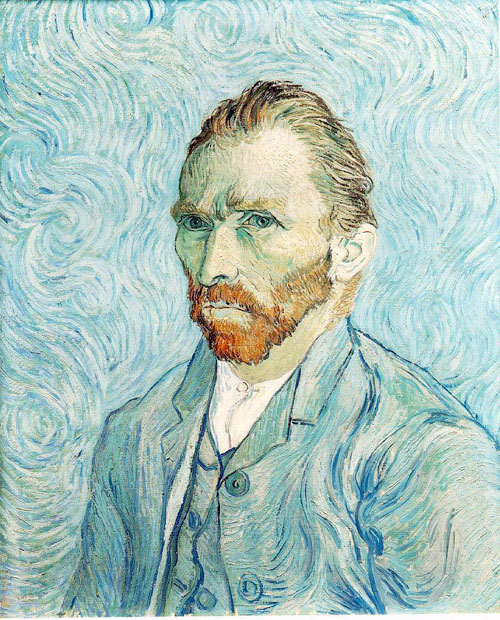

(via waxy)
The Olympic Games used to include competitions in painting, sculpture, literature, architecture, and music.
From 1912 to 1948 rules of the art competition varied, but the core of the rules remained the same. All of the entered works had to be inspired by sport, and had to be original (that is, not be published before the competition). Like in the athletic events at the Olympics, gold, silver, and bronze medals were awarded to the highest ranked artists, although not all medals were awarded in each competition. On a few occasions, in fact, no medals were presented at all.
(via @itscolossal)
Since the late 1980s, Mark Landis has been donating forged paintings he’s painted to a number of museums around the country. No one really knew why…until John Gapper from The Financial Times tracked him down.
For nearly three decades, Landis has visited museums across the US in various guises and tried to donate paintings he has forged. As well as Father Scott, he has posed as “Steven Gardiner” among other aliases. He never asks for money, although museums have often hosted meals for him and made small gifts. His only stipulation is that he is donating in his parents’ names — often his actual father, Lieutenant Commander Arthur Landis Jr, a former US Navy officer.
Landis has been prolific and amazingly persistent. A few weeks before he came to Lafayette, “Father Scott” arrived at the Nelson-Atkins Museum of Art in Kansas City, Missouri, with a forgery of Head of a Sioux by Alfred Jacob Miller that he said he was giving in memory of his mother, “Helen Mitchell Scott”. Landis has so far offered copies of that work to five other museums. Yet in all this time, although curators speculate about his motives, no one has found out why he is doing it.
Update: Landis is the subject of a documentary film called Art and Craft.
Mark Landis has been called one of the most prolific art forgers in US history. His impressive body of work spans thirty years, covering a wide range of painting styles and periods that includes 15th Century Icons, Picasso, and even Walt Disney. And while the copies could fetch impressive sums on the open market, Landis isn’t in it for money. Posing as a philanthropic donor, a grieving executor of a family member’s will, and most recently as a Jesuit priest, Landis has given away hundreds of works over the years to a staggering list of institutions across the United States.
Artist Ariana Page Russell has a skin condition called dermatographic urticaria that causes her skin to become inflamed when lightly scratched. Russell uses the condition to make art on her body.
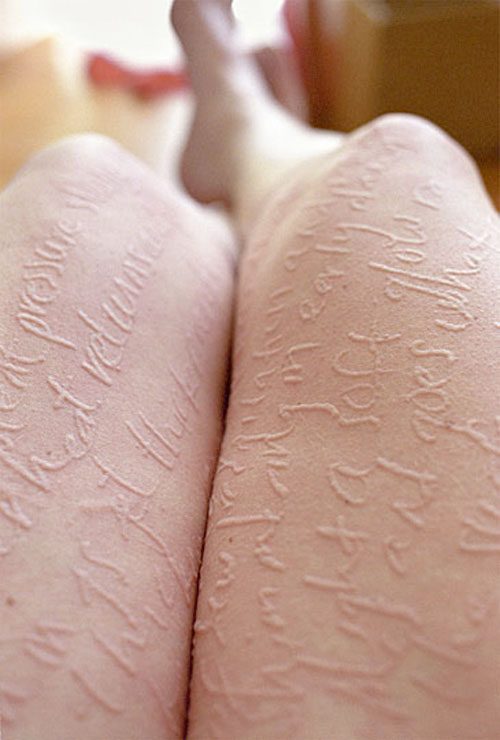
(via collacubed)
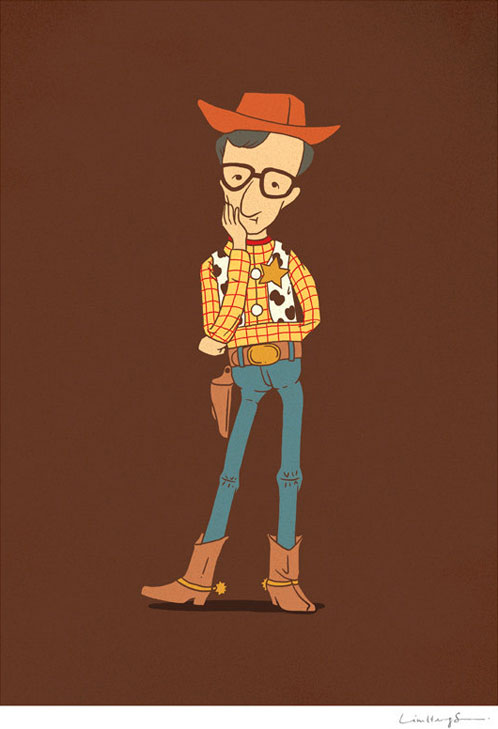
From artist Lim Heng Swee. Grab a print at Etsy while you can.
Fun fact: Tom Hanks does the voice for Woody in the movies but in most other media, he’s voiced by Tom’s younger brother Jim Hanks.
What’s this then? Jovian moon? Instagrammed photo of Earth taken from the ISS? Head of a nail?
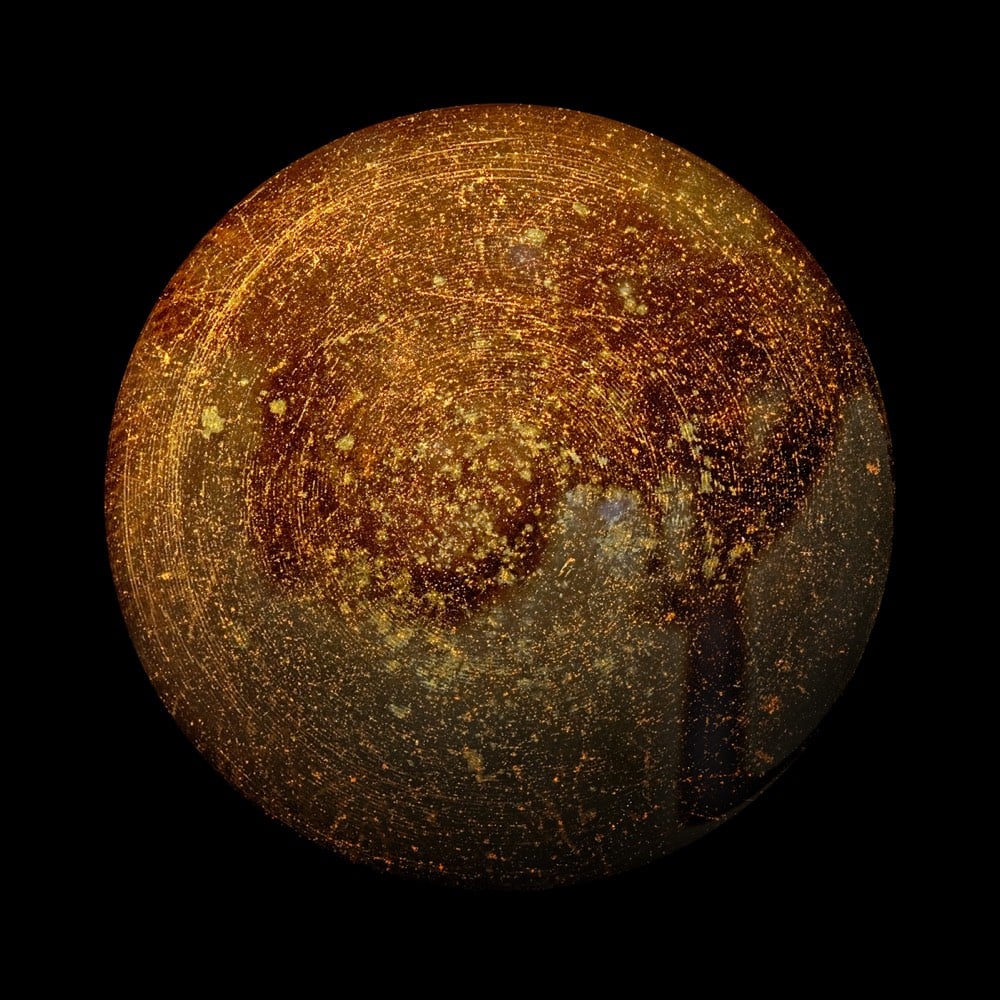
Nope, it’s actually a well-worn frying pan from a project by Christopher Jonassen.
Ha! Evan Roth is selling a series of “multi-touch finger paintings” called Open Twitter, Check Twitter, Close Twitter. The paintings are made by placing tracing paper over an iPhone screen while he checks Twitter with a painted finger.
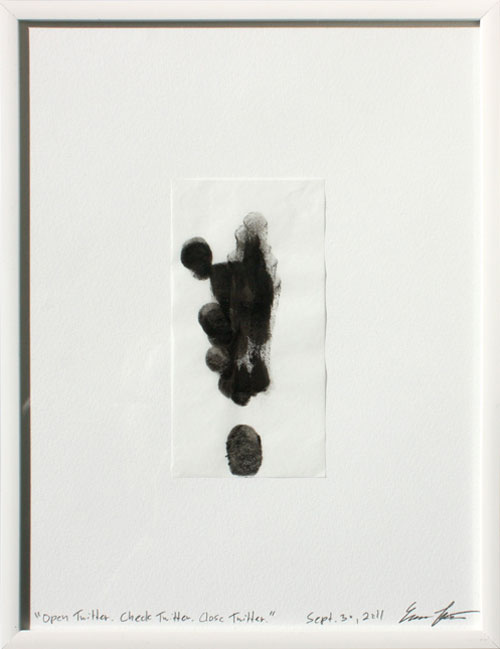
Artist Jonus Lund is broadcasting what he’s browsing in realtime. Each time he goes to a new site in his web browser, his site updates. When I visited earlier, he was looking at Lifehacker.
This is … well, I don’t really know what to say about it. It’s a video game version of Marina Abramović’s The Artist is Present. You buy a ticket, walk into the museum, look at some art, and then you wait in line. (via waxy)
Ursus Wehrli is coming out with a new book, The Art of Clean Up, which features pairs of photographs of different objects, in disorder and then sorted. Here’s my favorite pair:

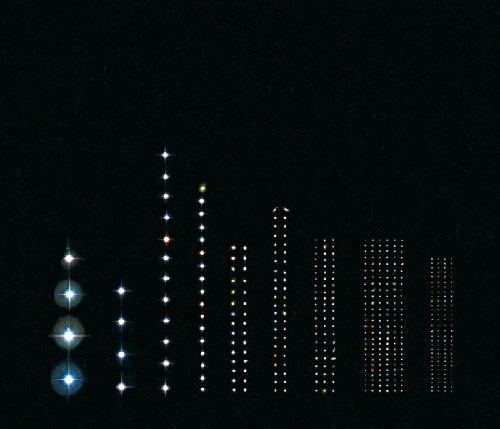
Photos from the book are disappearing from various sites around the web as takedown notices are sent out, but you can get the gist of the book by watching this video by Wehrli about how one of the photos was made:
On Saturday night, an 11-by-6-inch Rembrandt pen-and-ink drawing called “The Judgement”, worth $250K, was stolen from the Ritz-Carlton Marina del Rey. Interestingly, Rembrandt pieces are the second most stolen pieces of art.
Art experts reached Sunday said works by Rembrandt are among the most popular targets for art thieves, second only to those by Picasso, because of the artist’s name recognition and their value. Anthony Amore, chief investigator at the Isabella Stewart Gardner Museum in Boston and co-author of the book “Stealing Rembrandts,” said there have been 81 documented thefts of the artist’s work in the last 100 years.
It’s like I always say: When I edit Kottke, art gets stolen.
Update:
That was fast. The drawing has been recovered. Thanks, Patrick.
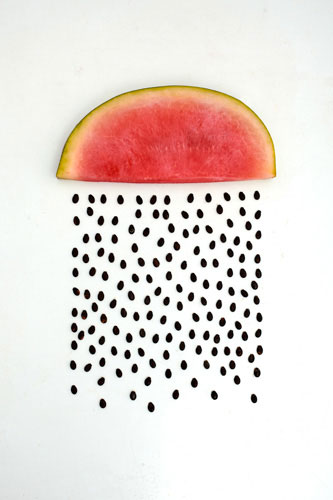
By Sarah Illenberger, who does many other things in a similarly playful style. Print is available. And now that I’m looking, I think I’ve seen her Soft Brain piece before. (Hey, I have!)
I posted about Chris Burden’s Metropolis II a few months ago. The artist is almost set to deliver the piece to Los Angeles County Museum of Art and there’s a proper preview for it:
My favorite line of the interview with Burden that runs over the video:
The idea that a car runs free, those days are about to close.
(via sippey)
Thomas Pavitte designed and then solved the world’s largest connect-the-dots puzzle (of the Mona Lisa). It took him 9 and 1/2 hours.
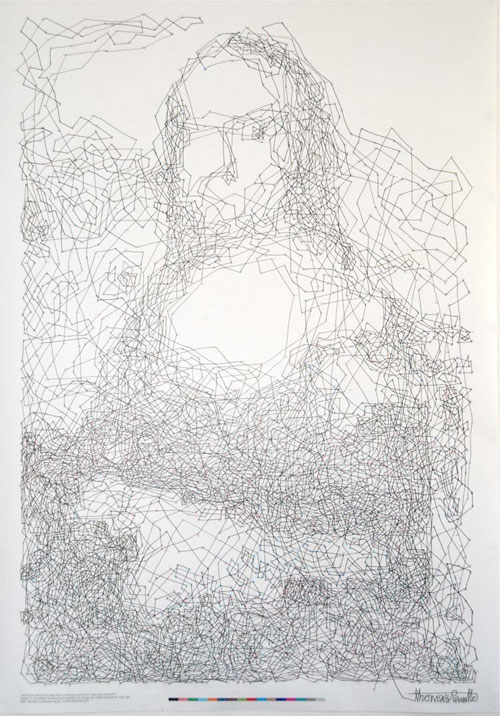
A time lapse video of Pavitte solving the puzzle is up on Vimeo. (via colossal)
Stay Connected